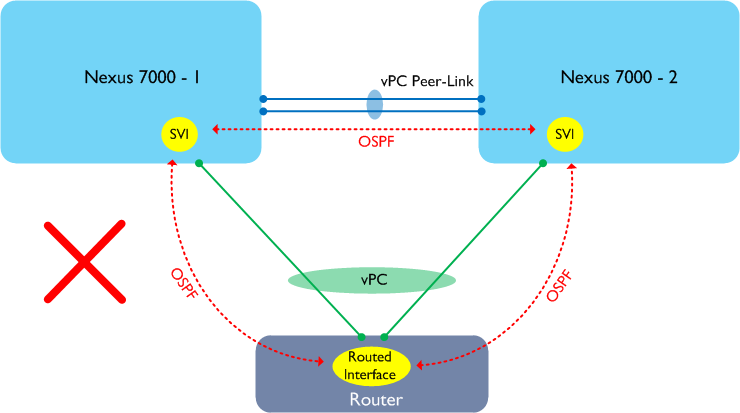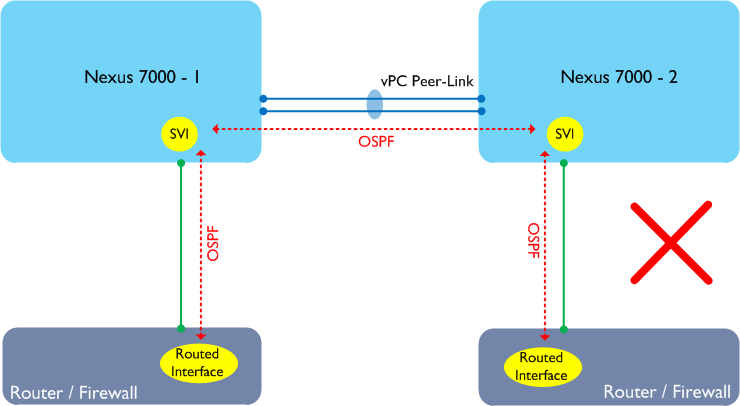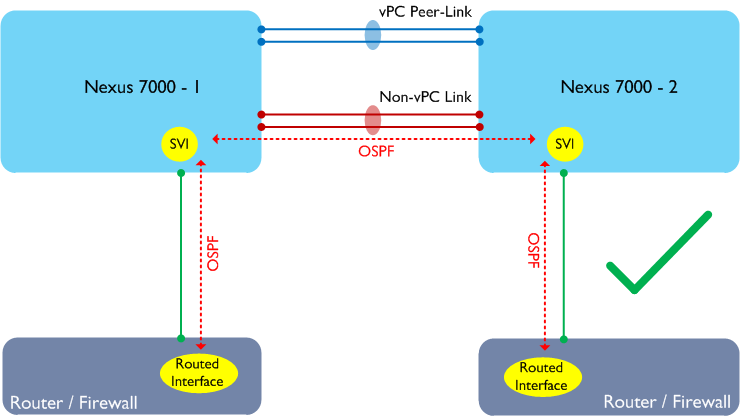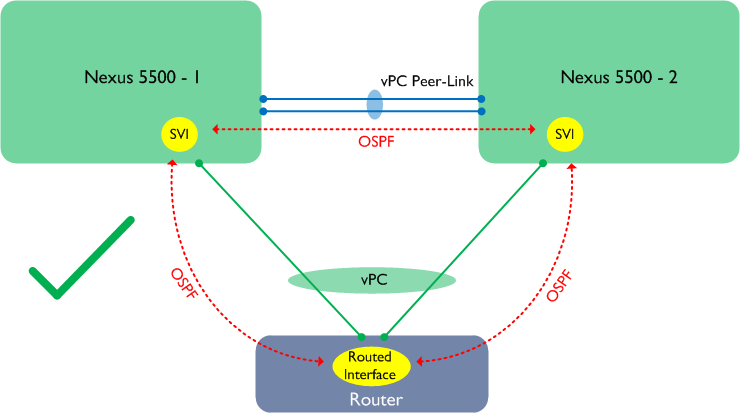L3 over vPC: Nexus 7000 vs 5000
08 Mar 2013The lack of support for running layer 3 routing protocols over vPC on the Nexus 7000 is well documented - less well known however is that the Nexus 5500 platform operates in a slightly different way which does actually allow layer 3 routing over vPC for unicast traffic. Some recent testing and subsequent discussions with one of my colleagues on this topic reminded me that there is still (somewhat understandably) a degree of confusion around this.
Let’s start with a reminder of what doesn’t work on the Nexus 7000:
In the diagram above, a router or similar device is connected to the two Nexus 7000 switches using a vPC and is attempting to form adjacencies with each peer. This design does not work on the Nexus 7000 as traffic may need to traverse the Peer-Link in order to reach its ultimate destination. The Nexus 7000 has a rule which says “any traffic received from the Peer-Link cannot be forwarded out via another vPC”, therefore such traffic would be dropped. Here’s a slightly different example:
In the above example, the routers or firewalls are single attached to the Nexus 7000 switches but do not connect using a vPC. This design doesn’t work either on the Nexus 7000 as each router / firewall will form an adjacency with both Nexus 7000s, and traffic may still traverse the Peer-Link. The common solution to the above problem is to run a separate link between the two Nexus 7000s to handle the non-vPC traffic:
No surprises so far - the above restrictions are well documented in various guides on cisco.com.
What may surprise you is that the Nexus 5500 works in a slightly different way - as a result, there are some topologies that don’t work on the Nexus 7000 but which do work on the Nexus 5500 (when running a layer 3 module). Let’s go back to our first example above, but this time let’s replace the Nexus 7000s with Nexus 5500s running with layer 3 modules:
The above design is supported and works for unicast traffic__ only. Why is this? The reason is that the Nexus 5500 does not handle traffic received from the Peer-Link in the same way as the Nexus 7000, therefore this traffic will be forwarded out on another vPC. Note however that traffic flows may still be suboptimal (i.e. traffic may arrive at Nexus 5500-1, only to have to traverse the Peer-Link to reach Nexus 5500-2), however the Peer-Gateway feature can be enabled to resolve this. I should note at this point that officially, the above design still isn’t recommended (although it works and is supported) - one of the reasons for this is that multicast traffic is subject to the same restrictions as on the Nexus 7000 and therefore does not work properly in this scenario.
If this hasn’t completely blown your mind, then I have one final topology to show you:
In the above example, two routers are single attached to the Nexus 5500s. There is a separate link for non-vPC traffic and the Peer-Gateway feature is enabled. This should work, right? Actually it doesn’t - in this scenario, OSPF adjacencies would not form properly. Note that this is specific to the scenario where there is a non-vPC link and Peer-Gateway is turned on. The solution to this is to revert to running the routed VLAN over the Peer-Link - which does work (for unicast traffic only).
Hopefully this will help to clear up some of the confusion - thanks for reading!




